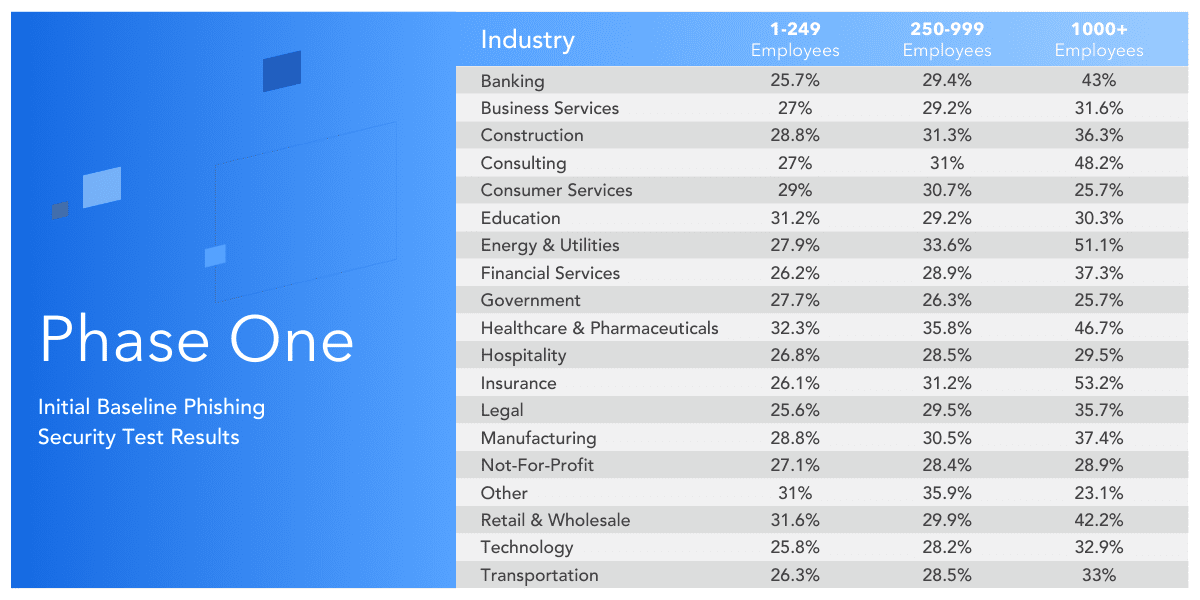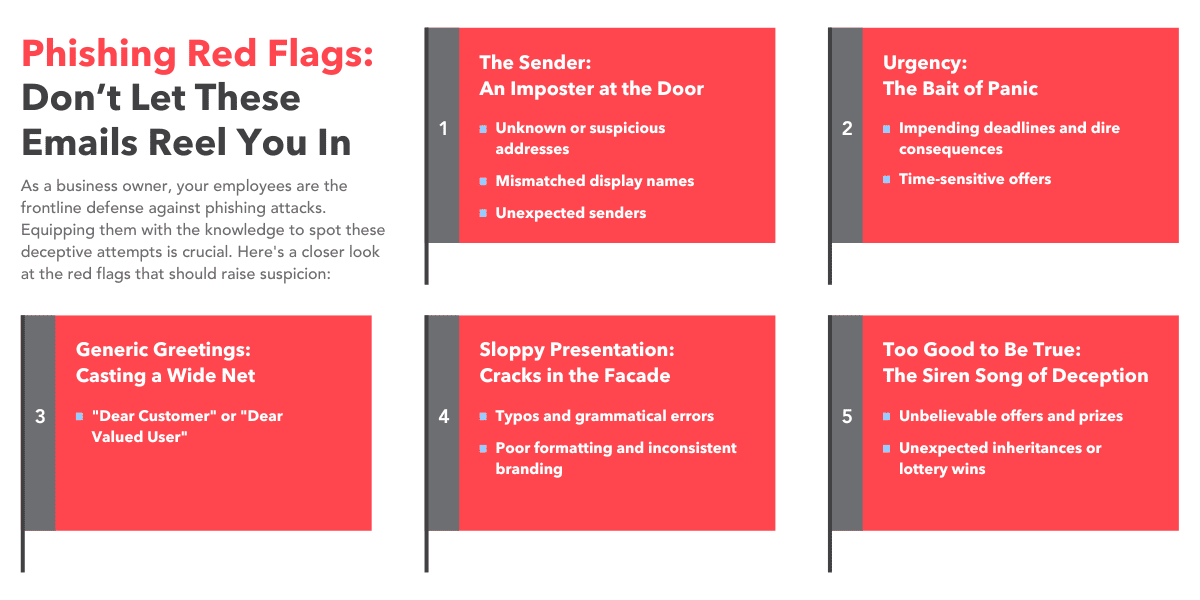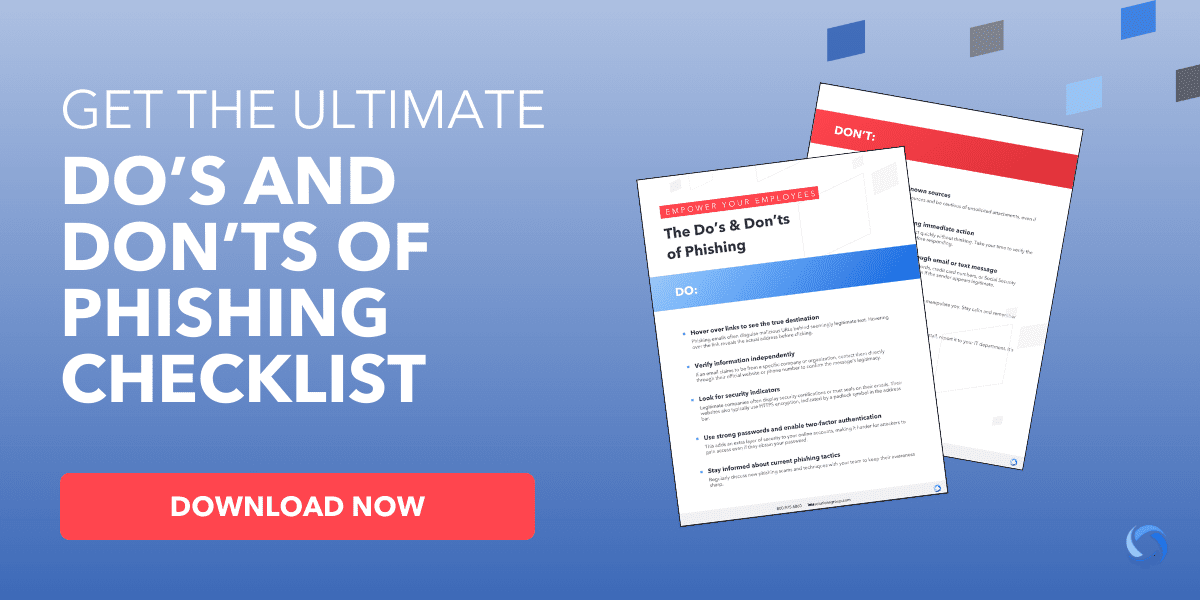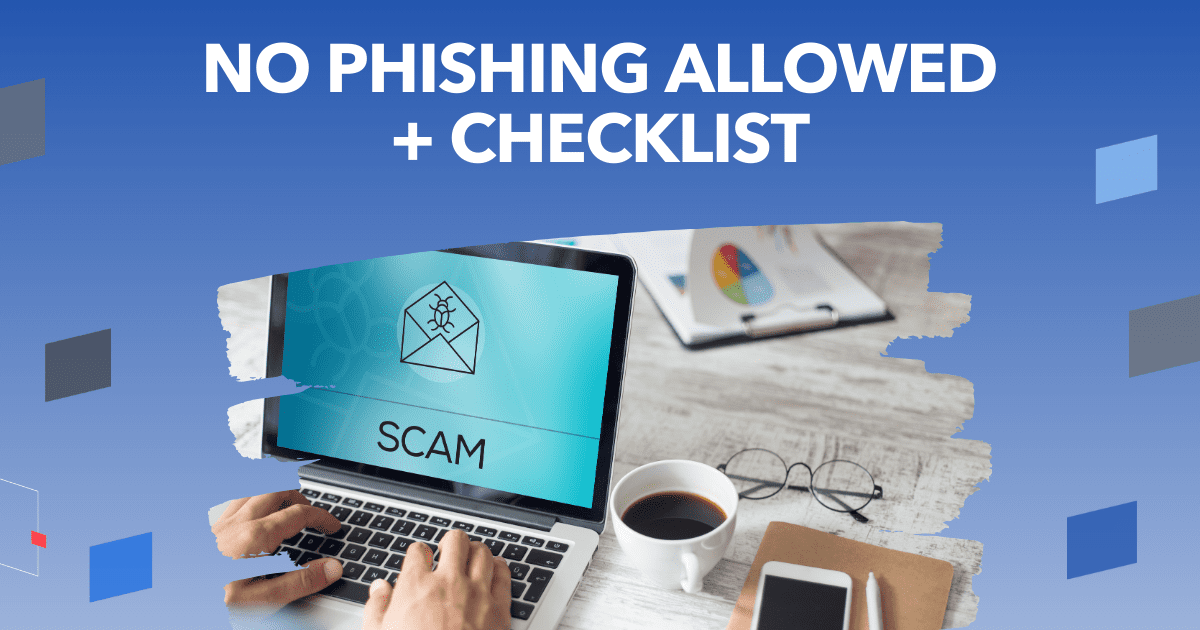The ever-present hum of emails, texts, and online notifications can lull us into a false sense of security. We navigate this digital landscape with trust, clicking links and opening attachments, often without a second thought. But lurking beneath the surface, a cunning predator awaits: the phisher. These digital tricksters craft deceptive messages designed to steal valuable information, leaving businesses vulnerable to financial loss, data breaches, and reputational damage.
Phishing scams aren’t relics of the early internet; they’re constantly evolving, employing sophisticated tactics to prey on human trust and exploit our inherent vulnerabilities. As business owners, the responsibility to shield your employees and safeguard your critical data from these digital threats weighs heavily on your shoulders.
But don’t worry, knowledge is your shield, and this guide equips you with the essential tools and insights to transform your digital castle into an impenetrable fortress against phishing attacks. So, step closer, grab your metaphorical sword, and join us on this journey to empower yourself and your team to navigate the digital world with awareness and confidence. Remember, together, we can stand strong against the phisher’s cunning ploys.

Phishing: Unveiling the Deceptive Depths
Imagine this: you receive an email that appears to be from your bank, urgently requesting you to “verify your account information” due to suspicious activity. The email includes a link, and with a touch of panic and a dash of curiosity, you click. What you don’t realize is that you’ve just stepped into a carefully constructed trap – a phishing scam.
Here’s some data on the phishing-prone percentage of companies within organizations that had not conducted any security awareness training. Users received no warning, and the tests were administered on untrained people going about their regular job duties.

Phishing is a cunning form of social engineering, where cybercriminals leverage human emotions and trust to manipulate victims. They craft emails, text messages, or even phone calls that mimic legitimate sources like banks, delivery services, or even your boss. The goal? To trick you into clicking a malicious link or opening an attachment.
These links can:
- Install malware: This software can steal your personal information, track your online activity, or even hijack your device.
- Direct you to a fake website: These replicas look identical to legitimate sites, luring you into entering your login credentials, credit card details, or other sensitive information.
- Download malicious files: These files can contain viruses, ransomware, or other harmful programs.
Once cybercriminals have your information, they can use it to:
- Steal your money: They can drain your bank accounts, make fraudulent purchases, or even sell your financial information on the dark web.
- Damage your reputation: They can use your stolen identity to commit crimes or spread misinformation.
- Harm your business: If they gain access to your company’s network, they can steal confidential data, disrupt operations, or even hold your data hostage with ransomware.
Phishing is a serious threat, but you can protect yourself and your business by understanding its tactics and remaining vigilant.

Remember: If an email raises even a single red flag, err on the side of caution. Don’t click on links, open attachments, or reply to the sender. Instead, report the email to your IT department or use the organization’s official website or phone number to contact them directly.
By educating your employees about these red flags and encouraging them to report suspicious emails, you can create a more vigilant workforce and significantly reduce the risk of falling victim to phishing attacks.
Empower Your Employees: The Do’s & Don’ts of Phishing
Equipping your employees with the knowledge and tools to combat phishing is crucial for building a robust security posture. Here’s a handy checklist of do’s and don’ts you can share with your team to empower them to identify and avoid these deceptive attempts:

By following these tips, you can help protect yourself, your employees, and your business from phishing attacks.
If you’re still worried your employees are falling for phishing scams, click below to test them.
Test them with a FREE, safe simulated attack and see their vulnerabilities.
IMS Solutions: Your Digital Shield Against Phishing
This blog has equipped you with essential insights, red flags to watch out for, and actionable steps to empower yourself and your team. But remember, staying vigilant requires an ongoing commitment. That’s where IMS Solutions comes in.
We are your trusted partner in cybersecurity, offering a comprehensive suite of solutions to safeguard your business from ever-evolving phishing threats:
- Security awareness training: Educate your employees to identify and report suspicious emails, texts, and phone calls.
- Email filtering and spam protection: Block malicious emails before they reach your inbox.
- Endpoint security: Protect your devices from malware, ransomware, and other harmful software.
- Phishing simulations: Test your employees’ preparedness with simulated phishing attacks.
- Security experts at your fingertips: Our dedicated team is here to provide continuous support and guidance.
Don’t navigate the digital world alone. Contact IMS Solutions today and let us help you build a robust defense with a phishing & cyber assessment. Together, we can create a safer, more secure online environment for your business and your employees.

